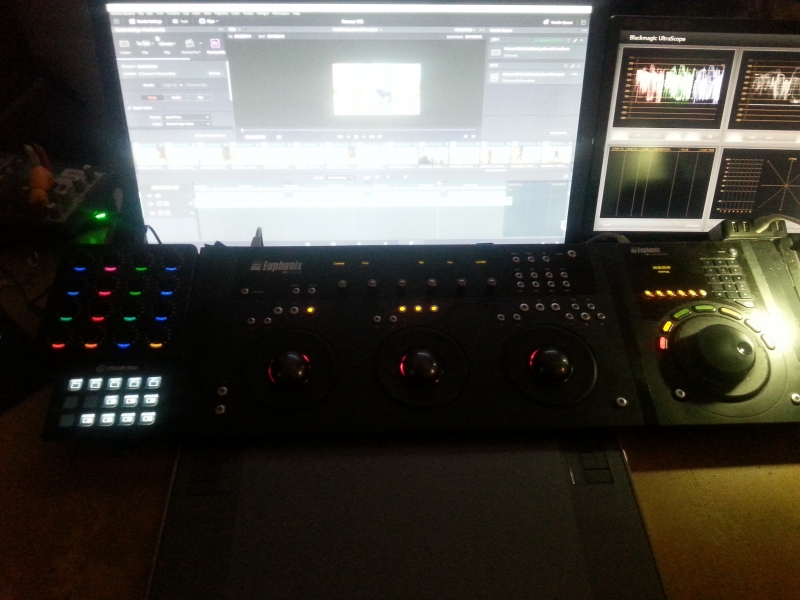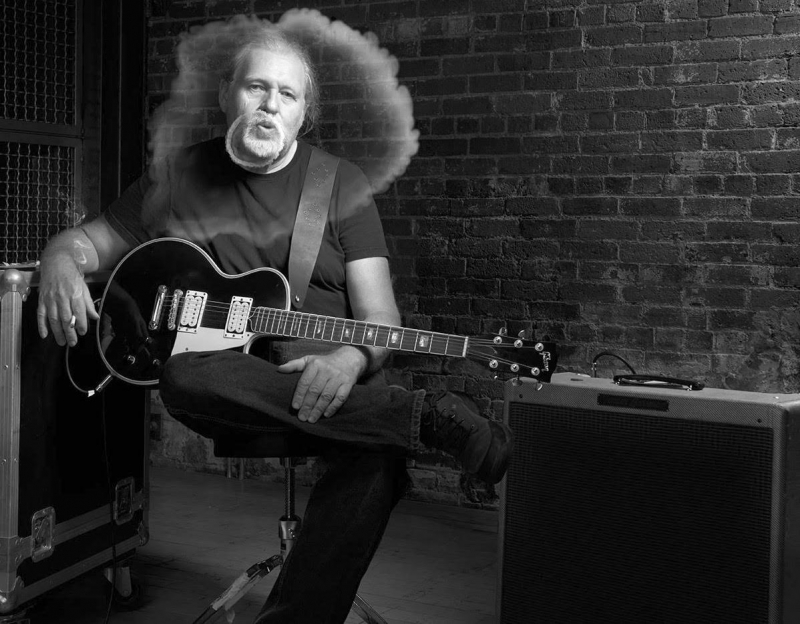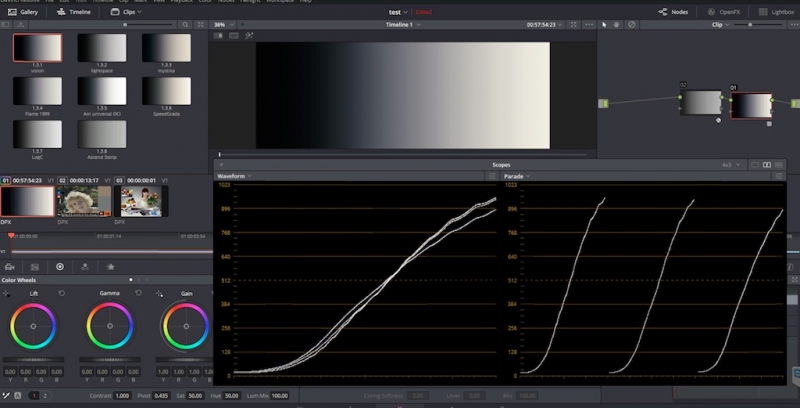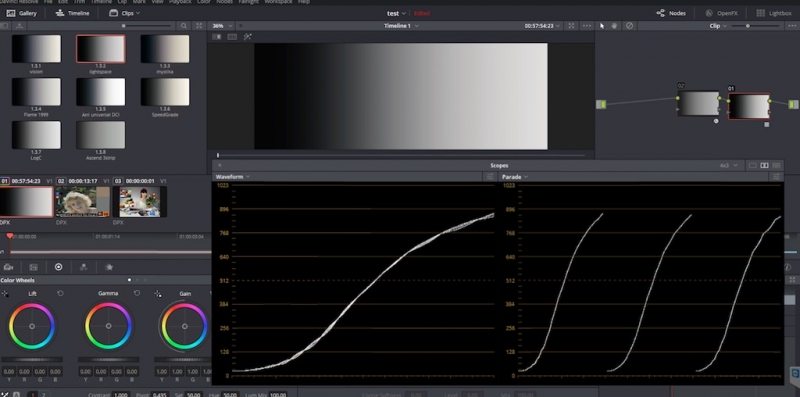
dermot.shane
Premium+-
Posts
112 -
Joined
-
Last visited
Content Type
Profiles
Case studies - Free
Case studies - Premium
Resources
Insider
Courses
Forums
Store
Everything posted by dermot.shane
-
Matching A7S and Alexa
dermot.shane replied to Virgil Edward's topic in Editing , Color grading & Finishing
suppose it goes back to one's prefrences to work in display refered, or scene refered... i prefer scene refered, and find matching these camera's to be pretty straight forward with the correct IDT's, no luts needed (or wanted really) in my choice of workflow in Resolve my default node tree has a node set to HSL, with Ch1/3 bypassed, so i have control of saturation on the rings for tweaks in regions most of the heavy lifting gets done in L*a*b nodes tho -
MIDIGrade (Fantastic DIY Resolve Controller for Mac)
dermot.shane replied to Ryan Moser's topic in Panels
good to know that windoze support is nearly there, we spoke a bit over a year ago about that my needs are much simpler than your target, i use Twister as a support for a small surface, my needs are; Pg1 = contrast/pivot/saturation + Pg2 = tint/temp/CB/MD/shadow/highlights i toggle Pg1/2 on the artist color softkeys already, so don't even need a knob push on twister, the mapping nicely overlaps already i have macro's to re-set all the above on XKeys, but might map those to the relitive knob push someday when i have time what i would like is; Prim/bars/RGB-LGG, all 9 of them. no need for luma, that's already mapped to my surface - vertical is hard for Bome to do a second page set to control horiziontal movements in the OFX window so i can control Paul Dore's filmgrade OFX with headz up So really cross purposes, you are creating a mapping to cover off someone with no surface, i already have the main surfaces, and want only a sub-set of what you created, and i want it all on one layer, not spread about if there's the ablity to customise for windoze i am interested in that! -
i was under the impression that the ofx transforms come from the maths provided by each cam mfg's IDT's?
-
MIDIGrade (Fantastic DIY Resolve Controller for Mac)
dermot.shane replied to Ryan Moser's topic in Panels
this is from a few months ago when i first got the streamdeck, since then i've added cute colored icons to it, added a numpad for BLE mem's changed out the little light and other small stuff i use the large Wacom alot, and have the softkeys on it mapped, the Artist Color surface softkeys have been totaly re-maped and a few trigger macro's now, i mapped the Transport for my prefrences as well there's an XKeys off to the right, but since i got the muscle memory for the streamdeck up to speed, i've not used the XKeys in months now, it just sits there and looks important to clients now, a prop really.... the whole thing is on a riser to keep it just clear of the Wacom and it can slide over top to the Wacom, not that i really ever use that.... the twister get a lot of use, i did a spotting session for a feature yesterday and used Wacom, Transport & Twister more than the Color surface... i'll try to get a current (and better) piccie on Monday -
MIDIGrade (Fantastic DIY Resolve Controller for Mac)
dermot.shane replied to Ryan Moser's topic in Panels
i use my twister all day, every day when driveing Resolve, super useful as an addition to my artist color/transport, and the streamdeck tucks right underneath it, really slick look on the desktop i've programed mine with Bome, i'm on windoze and Julius has only written his midi-mouse interface for mac, and i'm not a fan of how his mapping works anyway, as i use mine for the things the Resolve didn't get right on the Color mapping in the first place working in client attended sessions for more than year, it keeps it's head up, no dramas, rock solid hardware, sometimes need to shake the cursor manualy when Bome loses it's little mind tho and really extends the functionality of the small surfaces under Resolve.. without switching pages on the artist surface i have exposure / contrast /pivot / saturation / rgb exposure at hand.. that alone makes it worthy 😉 -
DaVinci Resolve 15 beta 2 is now available
dermot.shane replied to Margus Voll's topic in DaVinci Resolve
i've got both 14.3 and 15 installed, so i have a fallback... i do not see any issues with the burn-in on 15.b2, works as expected here -
DaVinci Resolve 15 beta 2 is now available
dermot.shane replied to Margus Voll's topic in DaVinci Resolve
my machines are all w10 ultimate with latest updates installed -
DaVinci Resolve 15 beta 2 is now available
dermot.shane replied to Margus Voll's topic in DaVinci Resolve
i have v15 running on four w10 machines, along side 14.3, it's been stable enough to work with on all machines, not without bugs, but no stability / crashes issues, just features like burn-in gone, and on one machine copy/paste will not work in the color page... no sign of crashes going in and out of fusion, or anything else for that matter all the machines are workstation class, and have enough resources to be reasonably solid, dual xeon's, minimum of 96g ram... it might not be quite so happy on a single 6c/16g consumer machine edit, i installed v15.b2 on two machine, both of the bugs i mentioned having seen in b1 are fixed, burn-in works, copy/paste in color page works only deal i'm seeing is a crash when opening up a DCP authored in another software -
yea a 59 custom, as best we can tell, could be early 1960, Gibbies sn;'s are a nightmare to sort at the best of times now another Bl(E) user question.... is there a way to move between BLE effects on diffrent tracks, or exclude working on some tracks without leaveing the BL ui? if so, i've not found it (yet)
-
don't really care, in good hands they both (and the f55 as well) create awesome images i use ACEScct always, to me the IPP2 thing seems like a load of marketing smoke and mirrors....
-
not excatly on topic, but speaking of Les Pauls.... here's a piccie of me with my mod'd 59 Lester + 59 Bandmaster, i've owned the Lester since 1971 when it was a "beat up old guitar"... i was student then, studying classical guitar and the Lester took every dime i had at the time,well worth it by 2018... The Bandmaster is Bryan Adam's, the piccie is taken at his studio, excuse the fake smoke ring, i had nothing to do with the piccie processing... i was just a passanger on that ship, and no one had a clue what my day job is ;-)
-
not safe to assume anything really.
-
starting playing with BLE v5 inside Avid, was wondering if anyone has found a way to play a sequence of say 5 - 10 shots... without exiting the Baselight UI and running it in MC?
-
VSCO Film Presets for Resolve
dermot.shane replied to Nicolas Hanson's topic in Editing , Color grading & Finishing
render out a gradient from gradeing software in lightroom import, apply effect, save import saved gradient in gradeing software and look at scopes as a starting point there's much much more that can be done, but that's a quick way to take a look at the basics -
haveing shot a ton of it in my lifetime, i can attest that a starting number of 7 is 16mm ;-)
-
yes, you only have to drop any of them over a grey scale to see there's diffrences between them
-
i LURVE blue box (and channel box too) btw... super awesome tools, used every day that i'm on Resolve
-
How do you organize your references?
dermot.shane replied to Emil Öberg's topic in Editing , Color grading & Finishing
excatly the same, drop on a temp timeline, make stills, delete timeline, keep stills -
Handle client micro managing versions
dermot.shane replied to Orash Rahnema's topic in Editing , Color grading & Finishing
i use all the above, i have save version / recall next / last version mapped to my Artist Color softkeys right above the gain ring.. it's stupid fast and easy to access, and it's used ALL the time i make new timelines for versions, if it was me i'd have v01, v02, v03 timelines etc to refrence / recall i don't make stills for everything, more typicaly i save mem's and then pull the mem's once full into a v01, v02, v03 etc folder to match the timeline i use groups constantly, often for grain in post group, using diffrent options for day int / day ext / night just as camera film stocks react, so it's easy to group a scene together and apply global changes also note that everytime i make a new timeline version, i also make a new DRP.... yesterday i made five in total.... takes about 45 seconds, and it's better safe than sorry -
Matching A7S and Alexa
dermot.shane replied to Virgil Edward's topic in Editing , Color grading & Finishing
i use ACES so the IDT's are replaceing OFX transforms, i let the Sony be a Sony and Arri be an Arri, then tweak to match as needed -
Nucoda DVO de-grain is where i'd start
-
LUT emulation input data
dermot.shane replied to Nicolas Hanson's topic in Editing , Color grading & Finishing
not any more, last time was about three years ago, for a south Asia based distb, and they asked for DPX@P3 i have lut's going back to the Kodak display manger's LUT's from some time in the 90's, i'm a digital packrat i guess.... -
LUT emulation input data
dermot.shane replied to Nicolas Hanson's topic in Editing , Color grading & Finishing
i agree that in depth anylisis is far better than pixel peeping, but dropping an Osiris 2383 lut over a grey scale takes 2 seconds, and pretty much imedatly shows massive issues with banding on the monitor and easly visable garbage on the scope but i'm thinking of a double standard.. one for technical luts, there pixel peeping is not enough, either trust your vendor -or- up the game on anlysis an one standard for "creative" luts like Osiris, there the bar is pretty low, if it can pass "do no harm" it's gonna be good enough for the task at hand a quick glance at a grey scale is a reasonable first step to eval the "do no harm" thing? At least one can throw out a frightningly large amount of the "creative" luts straight away and focus on the few that make it past the first step? would there be any reason to continue eval'n the Osiris 2383 lut i screencap'd above after looking at it over a grey scale? end game is the non linearlty of film is not a optimal choice to replaceate if the dammage done is substaintial, but Steve's 2383 has been smoothed out, and is useable without creating banding i have accurate filmout luts from many vendors, Technicolor, Deluxe etc, but they are only used in the monitoring chain, and removed from the rendering path.. there the non-linearity is a wanted thing, nothing gets rendered with it burnt in, unlike a 'creative" lut -
LUT emulation input data
dermot.shane replied to Nicolas Hanson's topic in Editing , Color grading & Finishing
drop a lut over a grey scale and pixel peep the scopes -
LUT emulation input data
dermot.shane replied to Nicolas Hanson's topic in Editing , Color grading & Finishing
as posted elsewhere... two luts, both claimd to be "accurate" versions of 2383, one an obvious bag of trouble, with banding and suboptimal maths, and costs you $200.... the other is free and has no obvoius issues at all; the one i question is Osiris, the one i'd use is from Steve Shaw.... the last time i graded a project for a filmout the facility asked for a P3 CTM, they had no more use for accurate emulation luts in 2018 i have worked on projects where the viewer emulation lut changed several time during the grade sched as the lab's chemistry & stocks changed, not recently tho, that was maybe 2008 ish....




